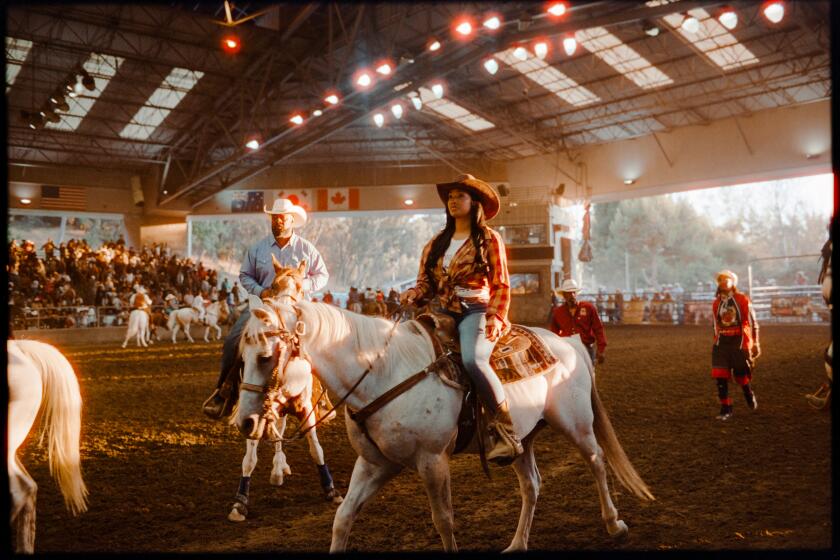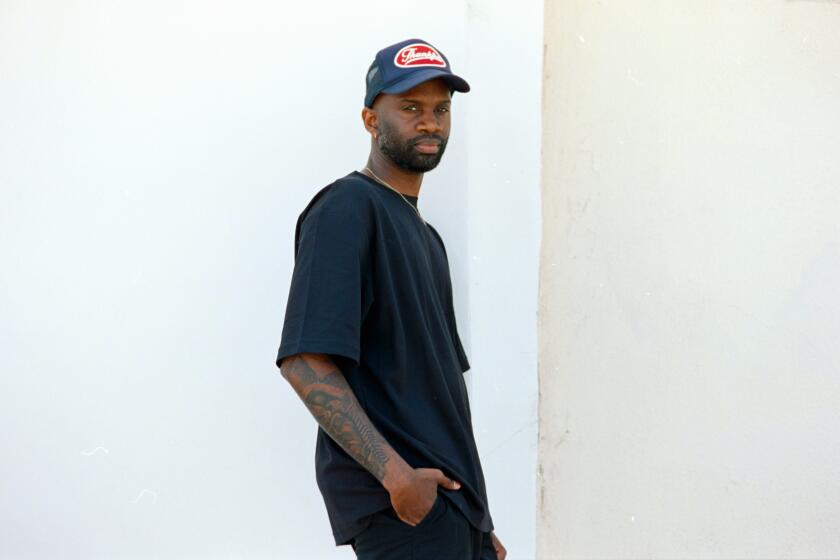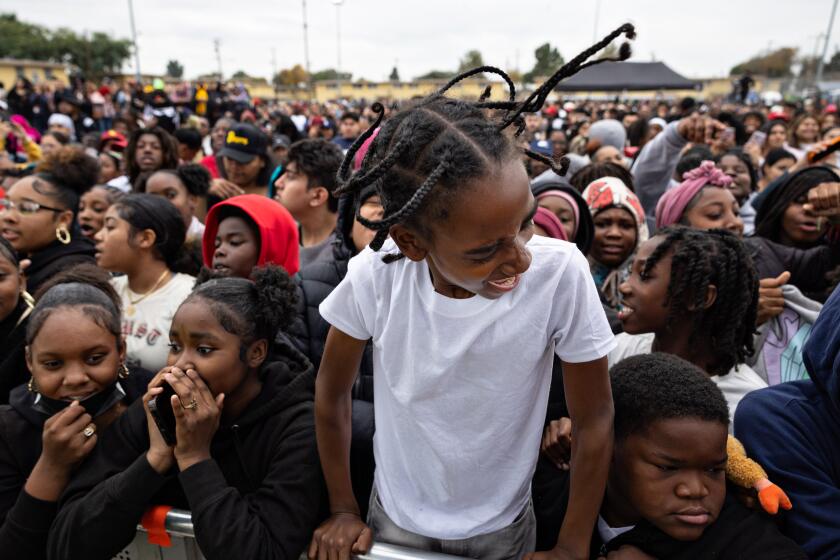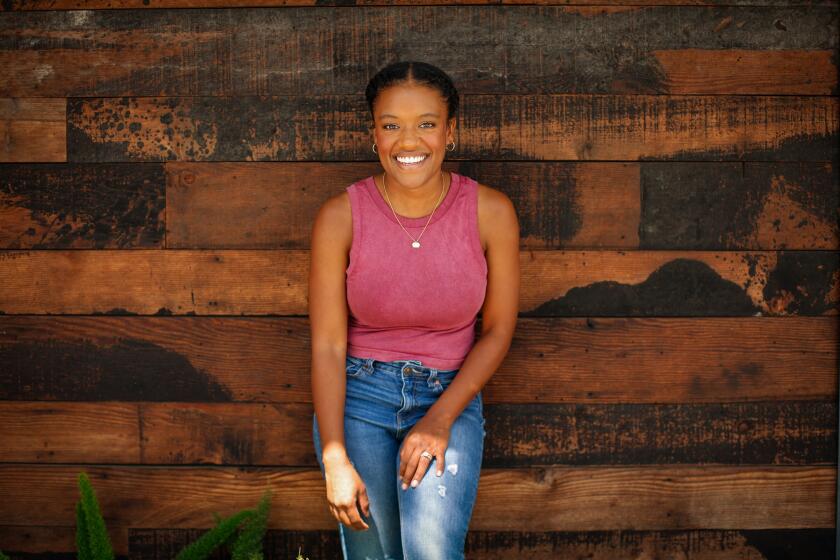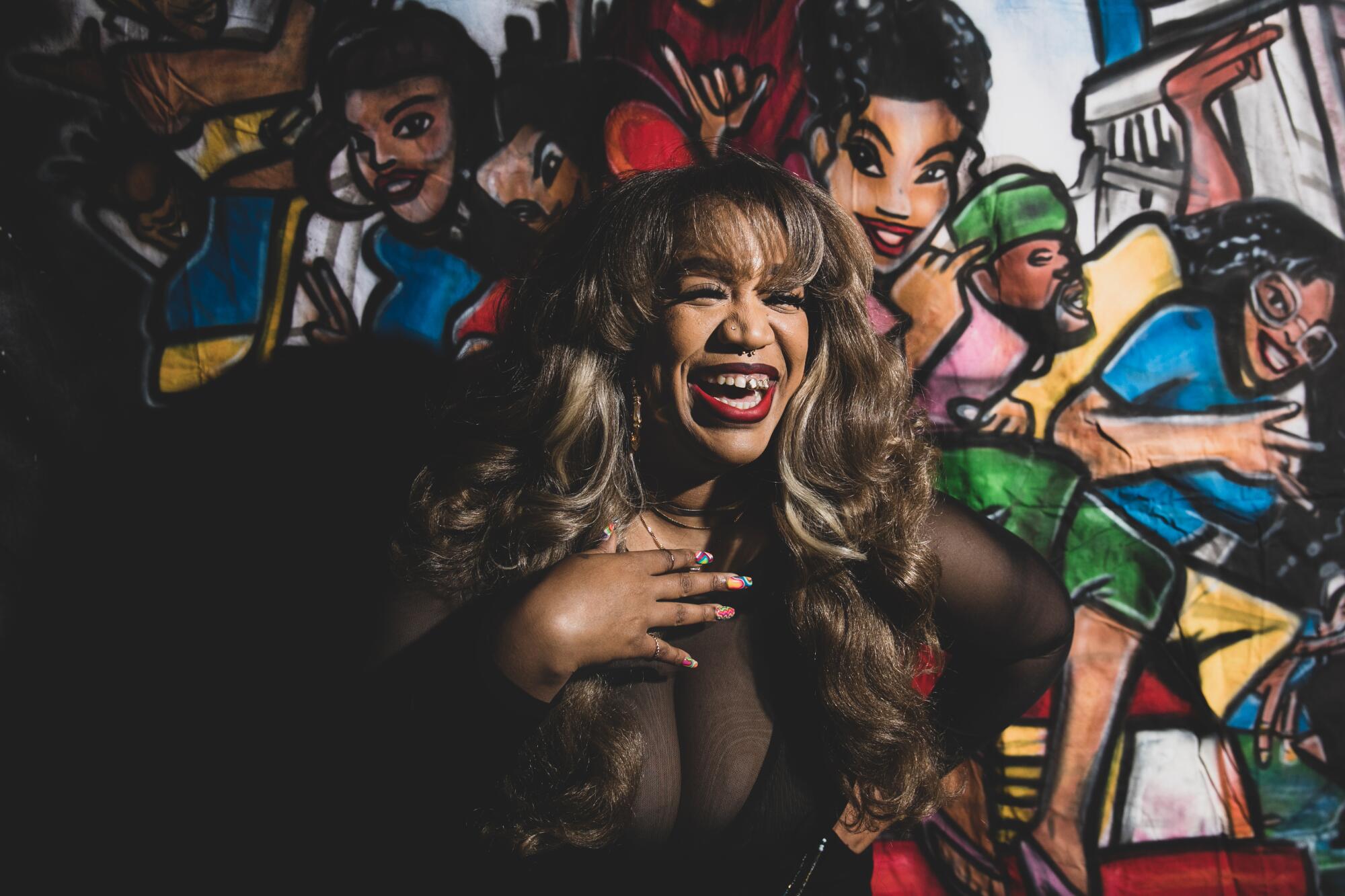
- Share via
When taking in the images of Black women that adorn the gallery space at HoochieCon, it’s clear the creator and curator, Zorine Truly, 37, has a major soft spot for hoochie mamas — the African American subculture of fly Black women who harness the power of their sexuality and creative expression.” Photos on the walls of the Glendale event space Junior High depict women with artful multilayered updos reaching for the heavens, big smiles sparkling with gold embellishments, vibrant acrylic nails as imaginative as they are long. Nostalgic portraits of friends turning up before the social media boom are spotlighted along with cherished TV and movie characters.
These women may not have an abundance of money, but they draw on their unique flair, swagger and innovation as a tool to show up authentically and claim space in a society that tells them they should shrink. Truly knows these women — often classified as hoochies — have always been more than a punchline in a movie or a mood-board fixture divorced from their humanity. Hoochies flip narrow, misogynoir-fueled ideas of what a good or respectable or fashionable woman can look like and look damn good while doing it. And as Truly explains to The Times, hoochies — in their many iterations over the decades — have long set the blueprint for popular trends and it’s high time they received their flowers.
“Simply put, hoochies are pioneers — for so many different genres of things,” says Truly, a North Memphis, Tenn., native and self-anointed Hoochie Historian who translates her research on hoochie culture into bite-sized videos. Interspersed with glimpses into her personal life and adventures around Los Angeles (like casually cutting up with Janelle Monaé at their Age of Pleasure party), Truly’s posts range from celebrations of prominent women and rituals in hoochie culture and their undeniable impact on fashion, beauty, art and pop culture to thoughtful deep dives that contextualize significant cultural moments, like Brandy and Monica’s ’90s smash hit “The Boy Is Mine.”
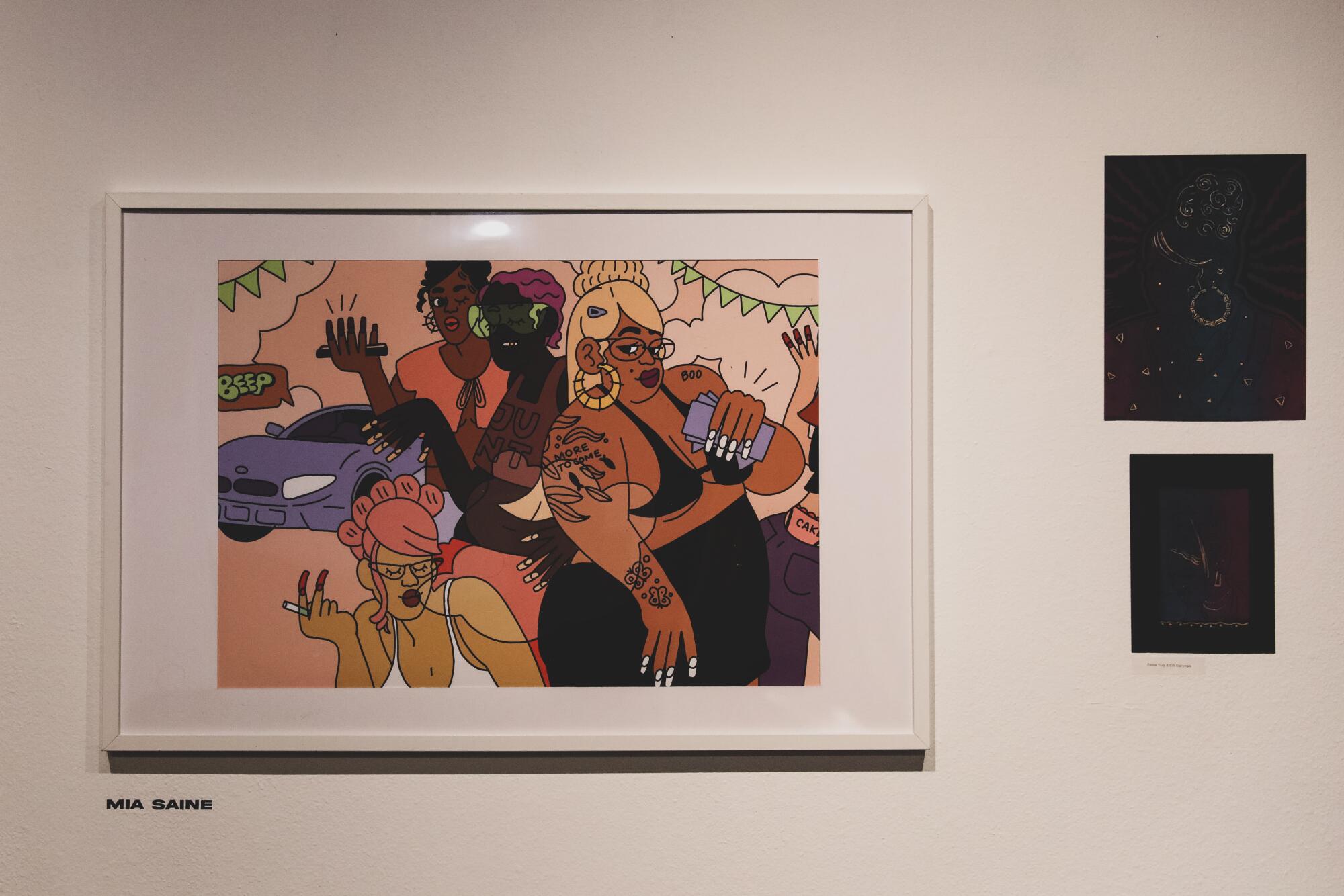
The pull to honor this rich legacy in a major way compelled Truly to launch HoochieCon, a group exhibit featuring mixed-media art and music honoring Black women pioneers at the center of hoochie culture. The exhibit, which was co-organized and hosted by the popular queer community space Junior High last weekend, kicked off with three days of activations. The exhibit’s opening day featured the type of moody bisexual lighting that promises a good time. Attendees from near and far came decked with joyful energy and their interpretation of comfortable hoochie attire, and a stripper pole that was added to the gallery for the special day was put to good use thanks to the trio of dancers (Phoenix, Ziyah, Brooklyn) who blessed the space with their skills.
The intention at the heart of HoochieCon resonated with a range of Angelenos on their own journey of discovering and embracing their authentic self and sexual agency, including Earyn McGee, 28. “I am the oldest daughter in a Black family and definitely felt like I had to perform a certain way of being and show up physically a certain way,” she says, noting the baby steps she’s been taking toward less filtered self-expression now that she’s grown. “Even with my outfit for today, I was a little bit nervous but I was just like, ‘I’m trying to be in theme. This was an idea that I had and I’m just gonna go with it.’ I’m trying to do all the things that would’ve made kid-me happy.”
The next two days had a little something for everyone: a panel discussion moderated by Truly, a dance party (more on that shortly) and an outdoor market featuring Black vendors. Chef Rochelle Tyler of Selah Bakery served up vegan cookies with flavors like Hollaback Girl (banana pudding) and Babycakes (strawberry shortcake), while Cake Chemistry offered its boozy miniature red velvet cakes with Hennessy-infused caramel sauce and cream cheese buttercream. There were beanie purses and clothing designs by Beautiful Soul Childz for the avant-garde fashionista who’s gonna serve a look if nothing else, handcrafted jewelry by Skiin & Tones and Studio Ebunoluwa, Hooch Juice travel tumblers by High Standards Cosmetics to help the hoochies hydrate in style, and more.
With music being so deeply intertwined with hoochie culture, Truly knew she had to have space devoted to everybody coming together, dressing up and having fun on the dance floor. The experience of dancing and moving her body to good music in the company of new and old friends makes her feel tapped into a particular feeling of power. “There’s something powerful about dancing despite everything that’s going on outside and despite what’s in the news or maybe what’s happening when you go back to your house,” Truly says. “There’s freedom in getting together in community and seeing Black faces celebrate, regardless of what circumstance they face every day. There’s power, there’s freedom and there’s happiness in it for me.”
DJ Space Age was on music duty for HoochieCon’s dance-floor celebration and did not disappoint. Bangers from the ’90s and early 2000s that stand the test of time boomed through the speakers, eventually teasing out the most committed of wall huggers to let loose and shake a little something.
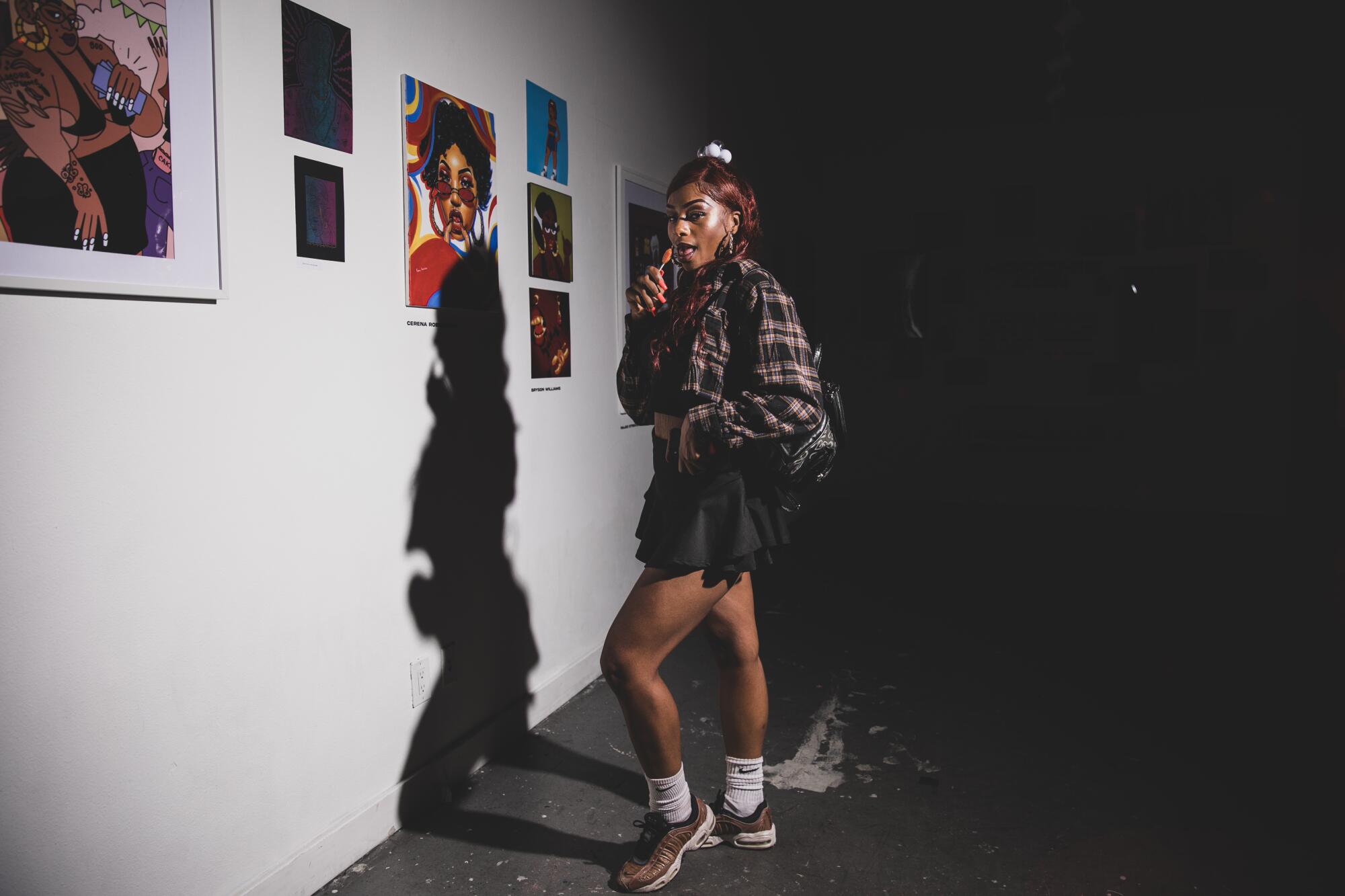
For Danielle Daniels, 29, the visual nods to the ’90s throughout HoochieCon resonated instantly. “My style of dressing is ’90s style so I love the environment of HoochieCon. The bamboo earrings, the jackets, the clothes and the nails — it’s nice to come out and see a lot of girls with the same culture and idea of things and to be able to express ourselves together as Black women,” says Daniels, who considers Halle Berry and Natalie Desselle’s iconic BAPS characters major hoochie inspo for herself and her best friend. “I wanted to come and celebrate ourselves and the beauty that we bring to beauty culture and everything.”
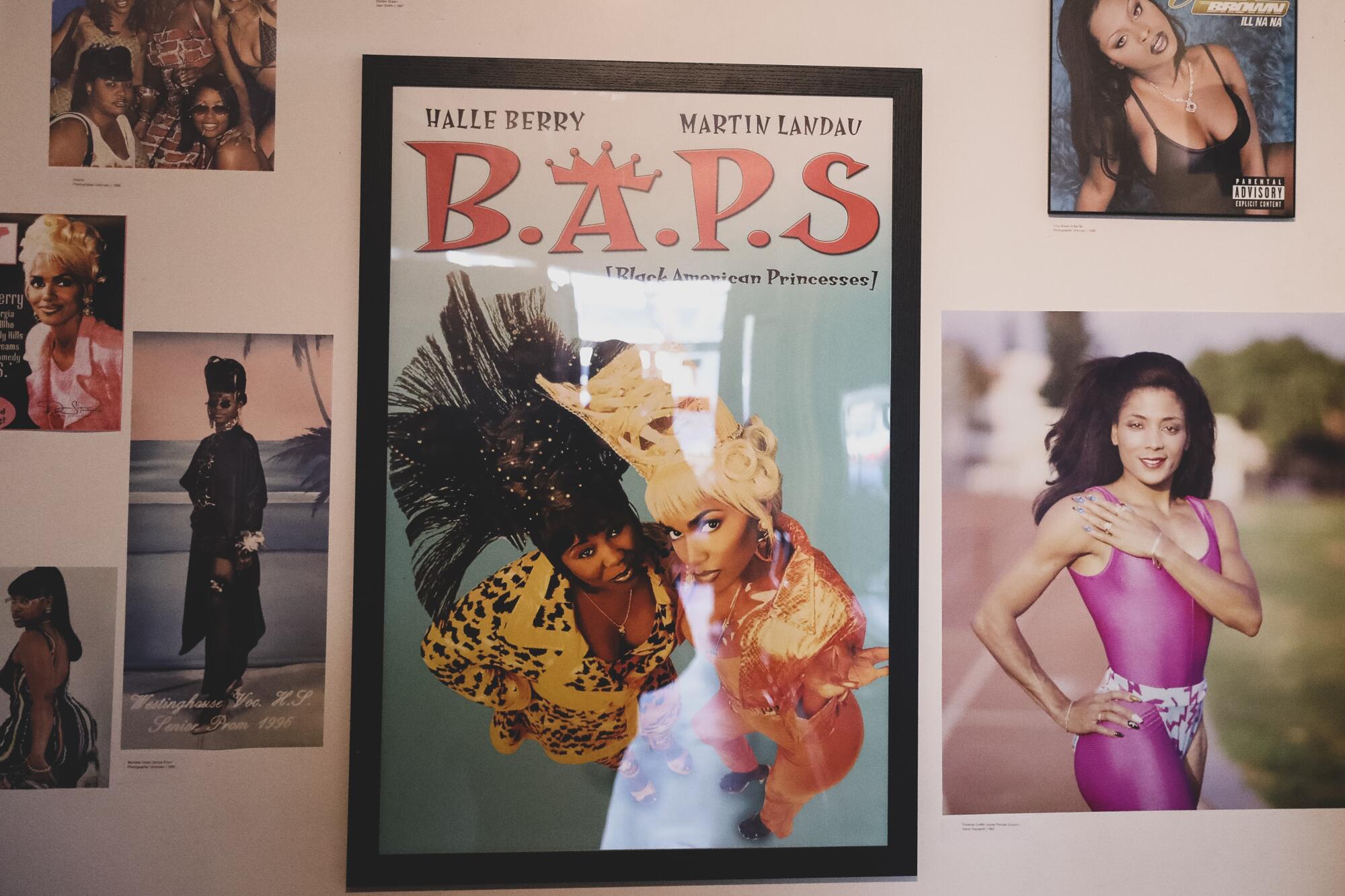
As Truly takes in the fruits of her labor, and the community that has formed around her first HoochieCon, she’s mindful to acknowledge the importance of giving respect and reverence to women who have pioneered and “touched popular culture for so long” without reaping the benefits or even receiving credit. “Not only did they pioneer it, they also had to suffer for it,” Truly says. “They had to suffer to wear their hair the way they wanted to. They had to suffer to wear their nails the way they wanted to, and gold teeth, and to be sexually liberated. They had to suffer to shine.”
One day, years later, people will look at images of Truly’s HoochieCon celebration. “What do you hope they take away?” I ask the Hoochie Historian.
“I hope they take away from HoochieCon the importance of being yourself, no matter what people might judge you by,” says Truly, releasing a deep exhale, eyes watering as she processes the idea of HoochieCon reaching people generations into the future. “It’s important to be happy with how you look, how you feel, how you dress, and the choices that you make, and that is the most important thing. I want people, especially Black women, to take away that they can be fully themselves no matter what that looks like and still be worthy of all the good things.”
More to Read
The biggest entertainment stories
Get our big stories about Hollywood, film, television, music, arts, culture and more right in your inbox as soon as they publish.
You may occasionally receive promotional content from the Los Angeles Times.



